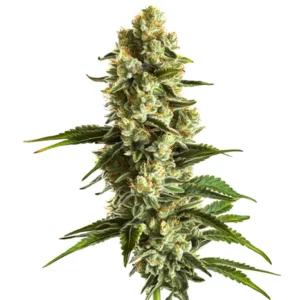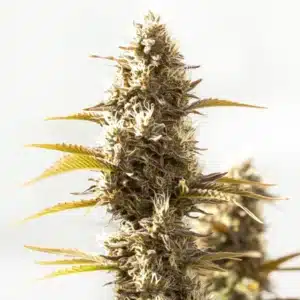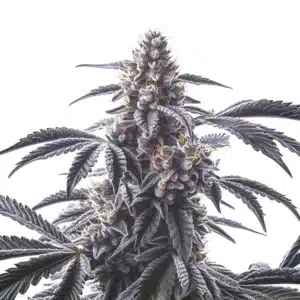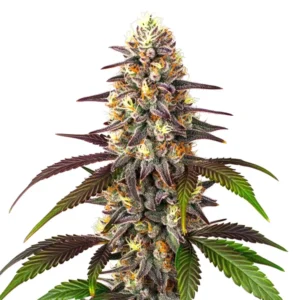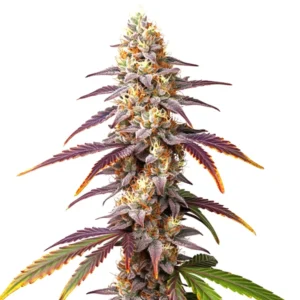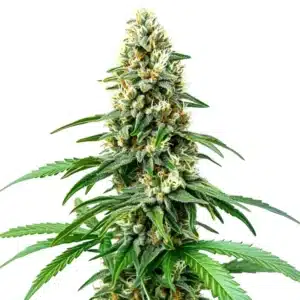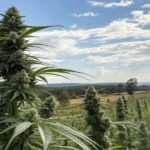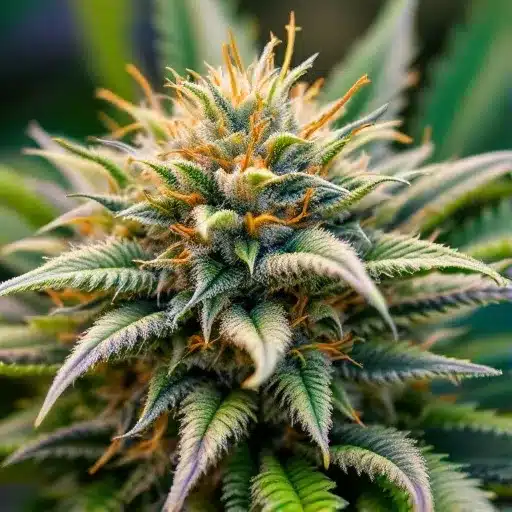
Why Your Cannabis Has White Hairs at 9 Weeks Flowering: Expert Insights
White Hairs During Flowering
What Do White Hairs on Cannabis Plants Indicate?
White hairs, also known as pistils, are an essential part of a cannabis plant’s reproductive system, especially noticeable in a weed with white hairs during flowering. During the white widow flowering stage, these hairs emerge from the calyxes to capture pollen in a natural environment. For growers, they serve as a visual cue that the plant is maturing and progressing through its flowering cycle.
At nine weeks of flowering, seeing white hairs can mean the plant is still actively developing buds. These hairs often indicate that the plant is not fully mature, but it is approaching the critical stages of flower ripening. Observing these signs helps growers plan their harvest timing effectively.
Recommended Strains
Banana Cream
|
|
THC | 28% - 30% (High) |
|
|
Type | Feminized |
|
|
Yield | Medium |
|
|
Phenotype | 70% Indica / 30% Sativa |
Banana Kush
|
|
THC | 17% - 21% (Medium) |
|
|
Type | Feminized |
|
|
Yield | High |
|
|
Phenotype | 60% Indica / 40% Sativa |
Pistils in Flower Development
Pistils play a vital role in the plant’s life cycle, acting as the reproductive organ. As the plant matures, the pistils transition from white to darker shades of orange, red, or brown. This change is a key indicator of the plant’s readiness for harvest.
White pistils at week nine suggest that the plant is still focusing energy on bud growth. This period is crucial for resin production and terpene development, which contribute to the potency and flavor of the final product. Paying attention to pistils ensures that growers achieve the highest quality yield.
Promos & Deals
Reasons for White Hairs at 9 Weeks Flowering
Environmental Factors Affecting Maturation
Environmental conditions, such as temperature, humidity, and light exposure, can delay the maturation of pistils. Cooler temperatures or inconsistent light schedules may prolong the flowering stage, keeping pistils white even at nine weeks.
Maintaining optimal conditions is crucial to avoid delays. Ensuring proper airflow, stable temperatures, and consistent lighting helps the plant stay on track for timely maturation. A well-controlled environment promotes the natural transition of pistils to darker shades, signaling readiness for harvest.
Genetics and Strain-Specific Flowering Times
Not all cannabis strains follow the same flowering timeline. Indica-dominant strains often mature faster than Sativa-dominant varieties, which may take longer to develop. Hybrid strains can vary widely depending on their genetic composition.
For strains with extended flowering times, white hairs at week nine might be completely normal. Understanding the genetic profile of your strain allows you to set realistic expectations and adjust your grow strategy accordingly.
Light Intensity and Its Impact on Flower Development
Light intensity plays a significant role in flowering progression. Insufficient or excessive light can affect how quickly pistils darken and buds mature. At week nine, if the plant is still producing white hairs, it might indicate that the light levels need adjustment.
Properly balanced light intensity ensures that the plant receives the energy required for optimal bud development. Using high-quality grow lights and placing them at the correct distance from the canopy can accelerate the flowering process.
Is It Normal to See White Hairs at Week 9?
Differences Between Indica, Sativa, and Hybrid Strains
Cannabis plants exhibit varied flowering behaviors based on their genetics. Indica strains are known for shorter flowering periods, often finishing within eight to nine weeks. Conversely, Sativa strains can take 10 weeks or longer to fully mature.
If a hybrid strain leans toward Sativa genetics, white hairs at week nine are not uncommon. Growers should reference the strain’s typical flowering time to determine if the plant is on schedule or delayed.
Late Flowering Strains vs. Early Finishers
Some strains are naturally late bloomers, requiring additional time to reach their full potential. These late-flowering varieties often produce white hairs even at the nine-week mark. Early-finishing strains, on the other hand, tend to darken their pistils earlier.
Understanding whether your strain is a late bloomer or an early finisher ensures that you don’t harvest prematurely. Allowing the plant to fully mature enhances both the potency and yield of your harvest.
Signs of Proper Ripening in Cannabis Buds
While pistil color is an important indicator, it’s not the sole factor in determining ripeness. Trichome development is a more reliable sign of maturity. Trichomes transition from clear to cloudy and finally amber as the plant reaches its peak potency.
Combining observations of pistils and trichomes provides a comprehensive picture of the plant’s readiness. White hairs at week nine, accompanied by clear trichomes, suggest that the plant needs more time to fully develop.
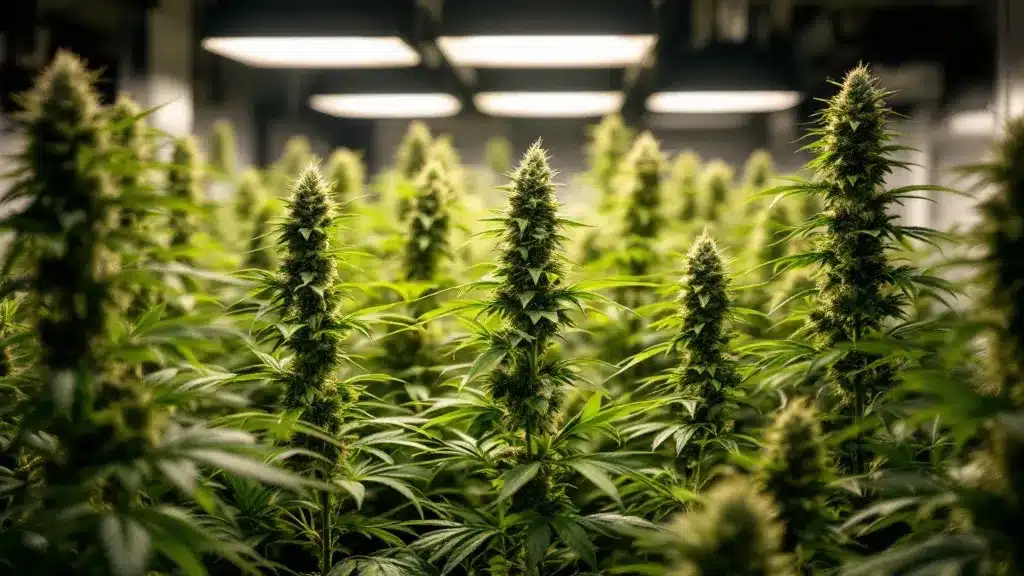
How to Determine Harvest Readiness
Using Trichome Color to Assess Maturity
Trichomes are tiny resin glands that contain the cannabinoids and terpenes responsible for a plant’s effects and flavors. Observing trichome color under a magnifying glass or microscope is the most accurate way to assess maturity.
Cloudy trichomes indicate peak THC levels, while amber trichomes signal a shift toward more sedative effects due to the conversion of THC into CBN. If trichomes remain clear, the plant is not yet ready for harvest, even if some pistils have darkened.
Observing Pistil Changes Over Time
As the plant matures, pistils will gradually darken and curl inward. This transformation typically occurs alongside the development of trichomes. At week nine, if most pistils are still white and straight, the plant likely needs more time to mature.
Monitoring these changes daily helps growers pinpoint the ideal harvest window. Combining pistil observation with trichome analysis ensures that no detail is overlooked.
Tools to Help Identify the Right Harvest Time
Investing in tools like magnifying glasses, microscopes, or jewelers’ loupes can make it easier to observe trichomes and pistils closely. Smartphone macro lenses are also an affordable option for capturing detailed images.
These tools provide a clear view of the plant’s progress, allowing growers to make informed decisions about when to harvest. Proper timing maximizes both yield and quality.
Common Mistakes with 9 Weeks Flowering
Harvesting Too Early Based on White Hairs
Many growers make the mistake of harvesting prematurely when they see a few darkened pistils. However, the presence of white hairs at week nine often indicates that the plant is still in the process of maturing. Patience is key to achieving a high-quality harvest. Waiting for a greater percentage of pistils to darken and trichomes to reach the desired color ensures the best results.
Overlooking Other Maturity Indicators
Relying solely on pistil color can lead to inaccurate assessments of ripeness. Trichome development, bud density, and overall plant health are equally important factors to consider. Taking a holistic approach to evaluating maturity helps avoid common pitfalls and ensures that the plant is harvested at its peak.
Misinterpreting Genetics-Driven Traits
Some strains naturally retain a portion of their white pistils even when mature. This genetic trait can be misleading for inexperienced growers. Familiarizing yourself with the specific characteristics of your strain eliminates confusion and allows you to adjust expectations accordingly.
Tips to Speed Up Flowering Maturation
Adjusting Light Cycles for Better Ripening
Reducing the light cycle from 12/12 to 10/14 during the late flowering stage can encourage faster maturation. This mimics the natural shortening of daylight hours as the season progresses. Adjusting the light schedule carefully helps the plant transition to full maturity without causing undue stress.
Nutrient Adjustments During Late Flowering
Switching to a bloom-specific nutrient formula with lower nitrogen and higher phosphorus and potassium levels supports bud development. Reducing nitrogen minimizes vegetative growth, allowing the plant to focus its energy on ripening flowers. Proper nutrient management accelerates the maturation process, ensuring that buds reach their full potential.
Optimizing Temperature and Humidity Levels
Maintaining slightly cooler temperatures and lower humidity during the final weeks of flowering can enhance resin production and terpene profiles. This adjustment also reduces the risk of mold or mildew developing in dense buds. Creating an optimal environment promotes faster ripening and improves the overall quality of the harvest.
Reasons for White Hairs at 9 Weeks Flowering
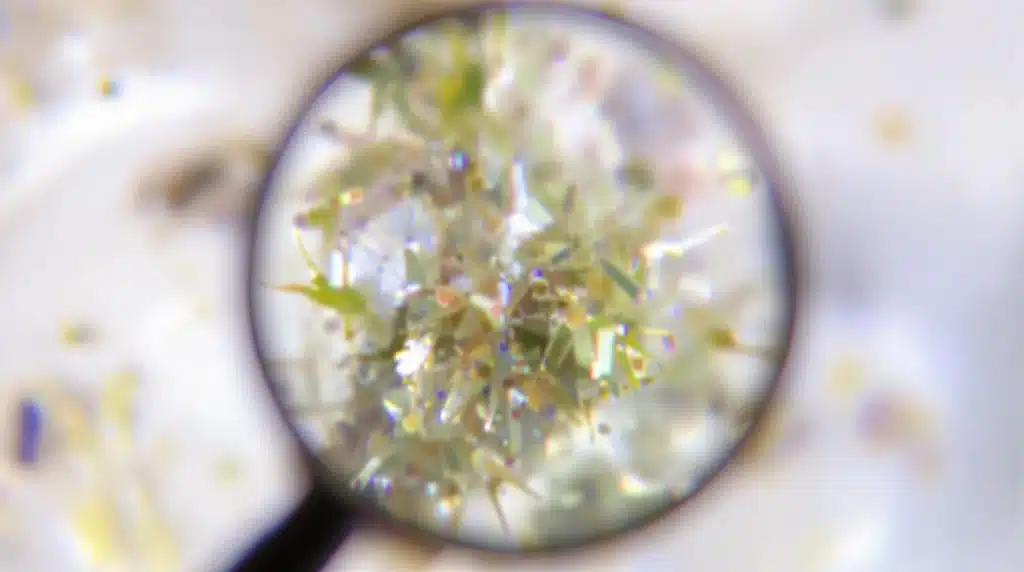
Environmental Factors Affecting Maturation
Environmental conditions play a critical role in the flowering stage of cannabis plants. Factors such as temperature fluctuations, humidity levels, and inconsistent light schedules can delay the maturation process. When plants experience stress during this phase, it may cause the pistils or white hairs to remain visible for longer, signaling that the plant is still attempting to reach full maturity.
Adjusting environmental conditions can significantly influence the speed and quality of flowering. Maintaining consistent temperatures between 70°F and 85°F, keeping humidity below 50%, and ensuring uninterrupted dark cycles are essential for helping cannabis plants transition from white hairs to ripened buds.
Genetics and Strain-Specific Flowering Times
The genetic makeup of a cannabis strain heavily influences its flowering timeline. Sativa-dominant strains, for example, often require longer flowering periods, with white hairs persisting into week 9 or beyond. In contrast, indica strains typically flower faster, and white pistils may begin to recede earlier in the flowering stage.
Hybrids can exhibit traits from both parent strains, leading to varying flowering durations. Understanding the genetic background of your cannabis strain is crucial for managing expectations during cultivation. Consulting seed bank information can help you anticipate how long the white hairs will remain visible.
Light Intensity and Its Impact on Flower Development
Proper lighting is essential for healthy flower development. Insufficient light intensity or inconsistent light schedules can slow down the ripening process, causing white hairs to linger. High-quality LED or HID grow lights should provide adequate coverage and intensity to support the plant’s transition from the pistil stage to mature buds.
Growers should also monitor the distance between the light source and the plant canopy. Lights placed too far away can result in poor light penetration, while lights that are too close can cause stress and heat damage. Balancing light intensity ensures that plants receive the energy they need to mature fully.
FAQs About 9 Weeks Flowering White Hairs
Is it normal for cannabis plants to have white hairs at 9 weeks flowering?
Yes, it is common for some cannabis strains, especially sativas and hybrids with longer flowering cycles, to still display white hairs at week 9. These white pistils indicate the plant is continuing to mature and develop its buds. However, it’s important to monitor trichome color and other maturity indicators for a more accurate harvest timeline.
Do white hairs mean my plant isn’t ready for harvest?
Not necessarily. While white hairs can indicate that the buds are still maturing, the true readiness for harvest should be determined by examining the trichomes. Cloudy or amber trichomes are a more reliable sign that the buds have reached their peak potency, regardless of the pistil color.
How long does it take for white hairs to turn amber or brown?
The time it takes for white pistils to darken and curl back depends on the strain and environmental factors. For most cannabis plants, this process begins as the buds near full maturity, typically over the course of one to two weeks. Strains with longer flowering periods may require additional time for this transition.



